Both Cadiz and Villarreal came into this match with encouraging form. Cadiz have lost just three La Liga games since appointing Sergio, who has racked up four wins and four draws, boosting Cadiz from relegation favourites to giving them a concrete chance of playing top-flight football next season. Villarreal, meanwhile, were coming off a major high in knocking out Juventus from the UEFA Champions League in their last match. With a 3-0 away win in Turin sending them into the quarter-finals of Europe’s premier club competition, where they will face the formidable Bayern Munchen. Unai Emery had to put any thoughts of another potential European upset as his team travelled to Cadiz, searching for a win which could take them above Real Sociedad on goal difference, and into European qualification positions.
In this tactical analysis, I will examine the tactics behind Cadiz’s 1-0 win over Villarreal.
Starting Lineups
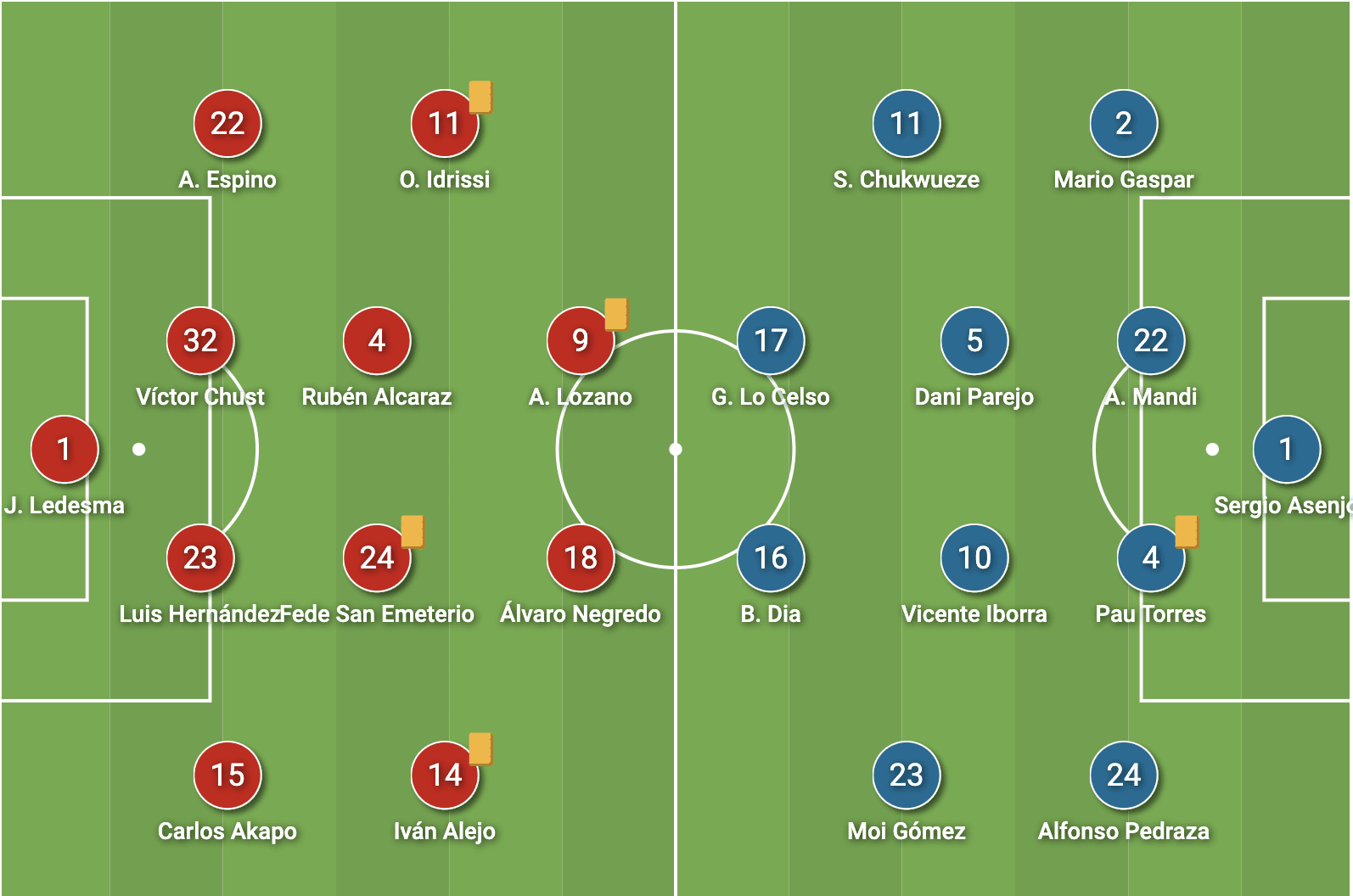
Cadiz started in a 4-4-2 shape. Jeremias Ledesma started as the goalkeeper, behind Luis Hernandez and Victor Chust who played as the pairing in central defence. Carlos Akapo and Alvaro Espino played as the fullbacks, supporting Ivan Alejo and Oussama Idrisi who played out wide. Ruben Alcaraz and Fede San Emeterio started as a midfield double pivot, while Anthony Lozano and veteran striker Alvaro Negredo started as the strike partnership.
Villarreal matched their opponents 4-4-2. Sergio Asenjo started in goal, with Pau Torres and Aissa Mandi as the centre backs ahead of him. Alfonso Pedraza and Mario Gaspar played as the fullbacks. Vicente Iborra and Dani Parejo played started the game as the midfield double pivot, flanked by Moi Gomez and Samuel Chukwueze out wide. Giovani Lo Celso and Boulaye Dia played up front.
Villarreal’s pressing conundrum
Cadiz built play in a fairly standard 4-4-2. The fullbacks remained relatively deep and the wingers would stay wide. In their oww 4-4-2, Villarreal naturally matched up quite well from a pressing point of view. The two centre forwards were responsible for the two centre backs, while the wingers would trigger a press when the ball was played to the fullbacks.
Cadiz would have one of their midfield double pivot (usually San Emeterio) drop deep to collect from the centre backs, while the other midfielder would push up into higher and wider position. This meant that Cadiz often played with one midfielder. This caused an issue for Villarreal as their 4-4-2 defensive shape had a lot of space in between their first and second defensive lines, particularly in the space between the centre forwards and the midfield double pivot. This allowed the dropping midfielder to receive without time and space on the ball if they managed to bypass the first line. The other, wider midfielder also caused problems for Villarreal, as their winger was occupied by the fullback, and their fullback was occupied by the winger. This meant that the drifting midfielder, along with the centre forward on the near side could create wide overload’s against Villarreal’s defensive structure. We can see Villarreal’s pressing responsibilities, as well as Cadiz’s midfield movements in the diagram pictured below.
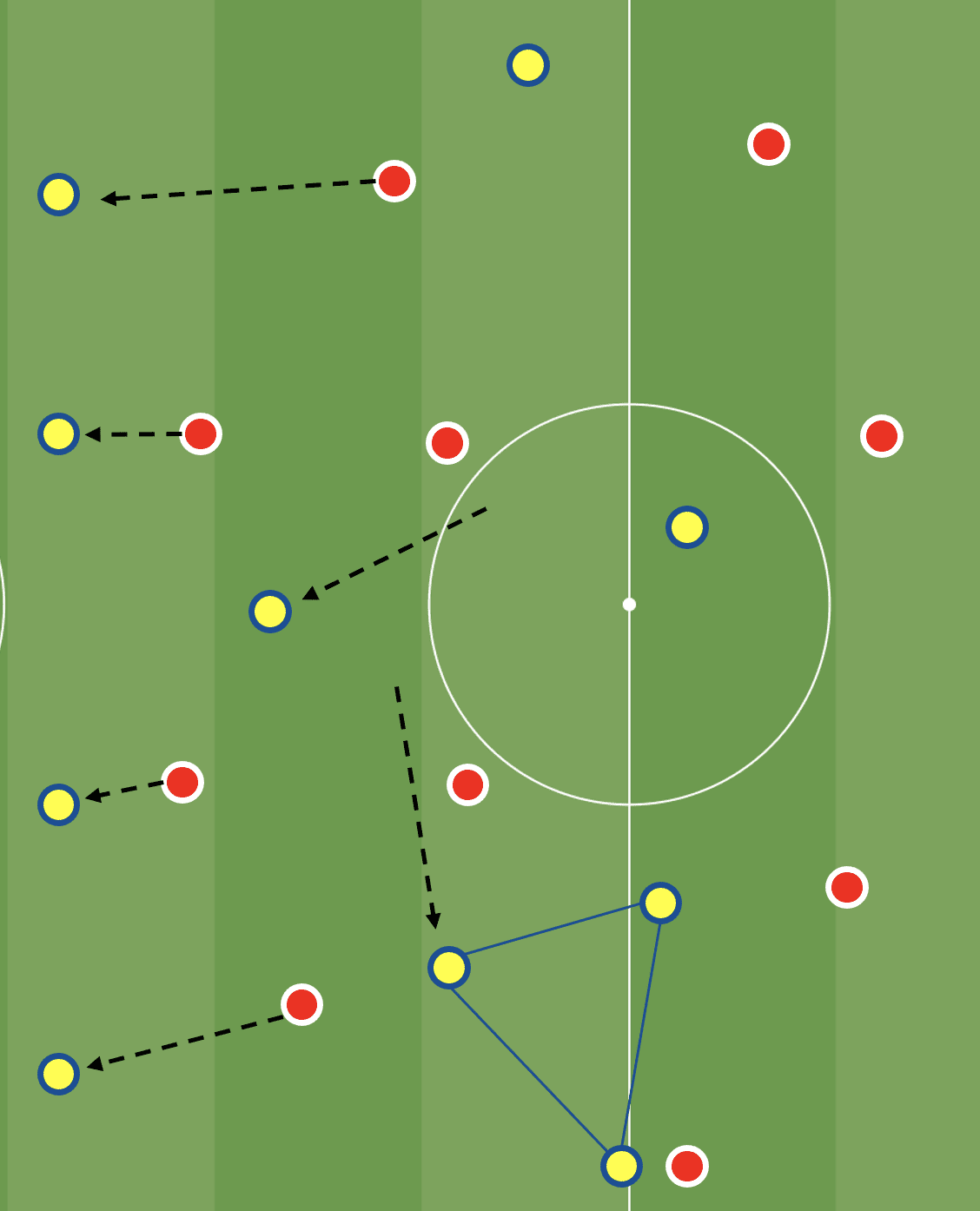
To combat this, Villarreal would change into more of a diamond shape. The wide players would tuck inside more, while the double pivot split vertically into a defensive and attacking midfielder with the narrower wingers acting as the outer midfielders in the diamond. We can see this diamond in the example below. Villarreal have changed their shape so as to not allow San Emeterio time and space on the ball when he receives.
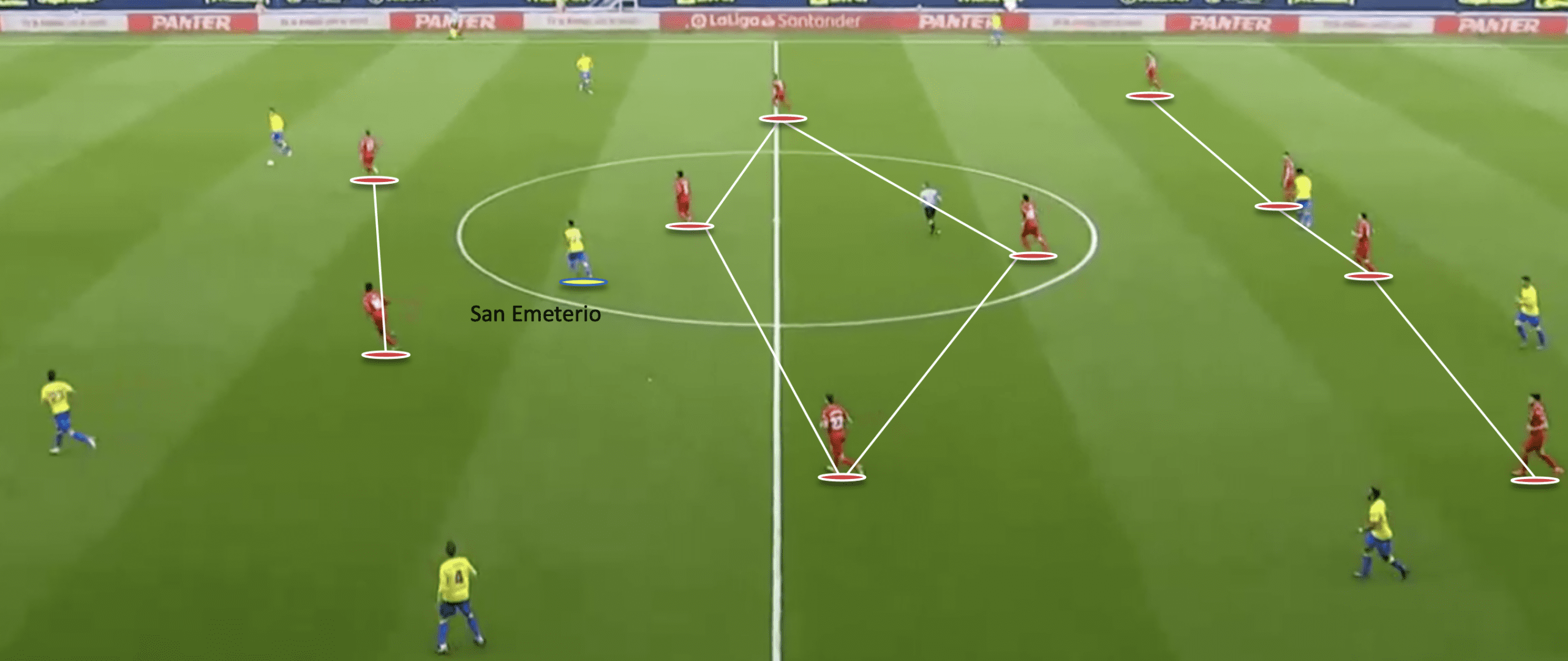
Though this change did allow Villarreal to more effectively press Cadiz in central areas, this meant that it was more difficult to then press the fullbacks. This was due to the narrower positioning of Villarreal’s wingers, which they had to take in order to prevent being outnumbered in the midfield by trying to press the dropping Cadiz midfielder. Villarreal were essentially forced to choose between preventing San Emeterio from being able to receive with time and space, or being able to prevent the fullbacks from doing the same. Granted, the fullbacks still were pressed when the ball was passed to them, but due to the narrower position of the winger, they had to make a diagonal run. This left the passing option to the near-side Cadiz winger open, and it allowed for a pass inside if the closest midfielder was not followed.
Cadiz’s solid defensive display
Like their opponent, Cadiz also defended in a 4-4-2 with similar, but less intense pressing triggers. As previously mentioned, the 4-4-2 matches up quite well against itself from a pressing point of view. The wingers would press the fullbacks, while the centre forwards matched up 2v2 against the centre backs. Cadiz didn’t do anything fancy or too special defensively. However, their 4-4-2 defensive shape is very well coached, allowing little space.
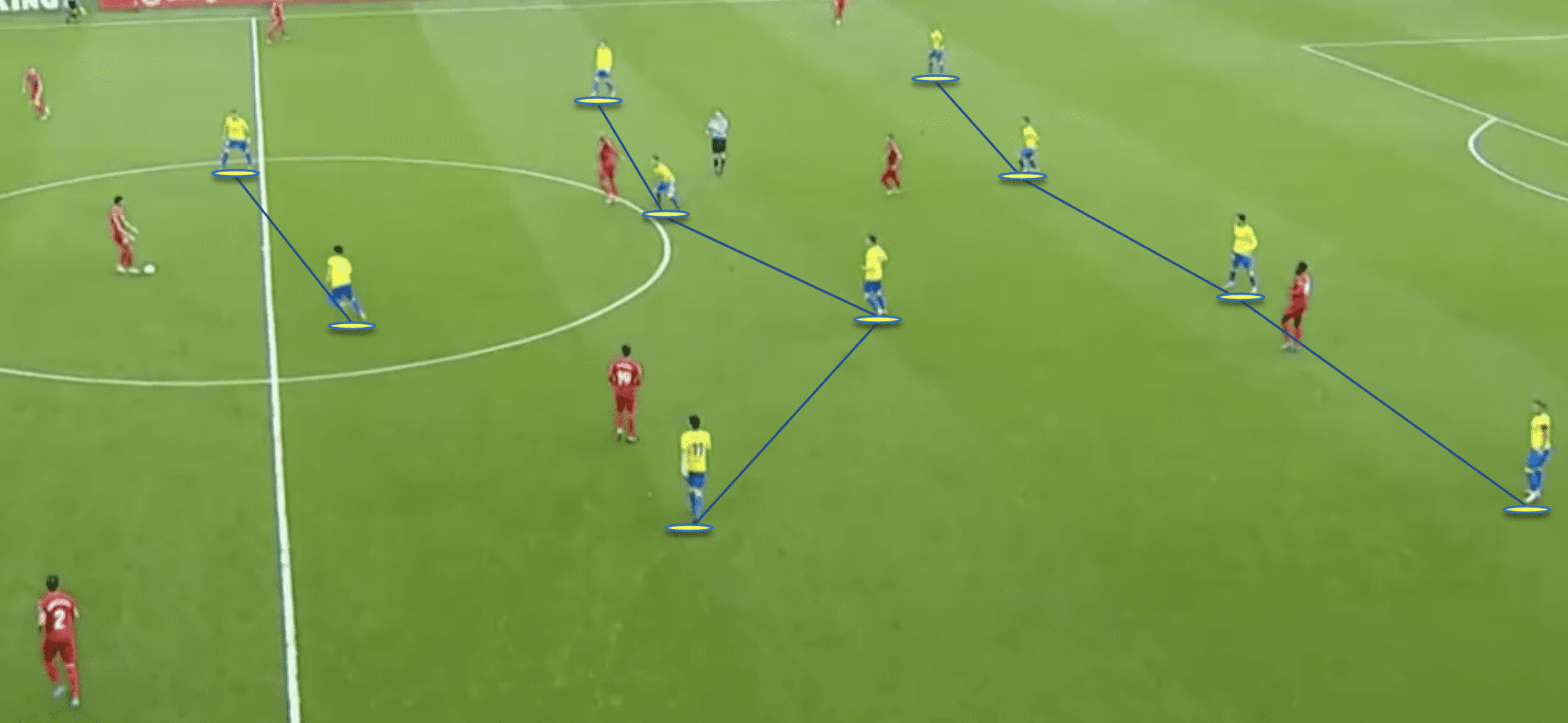
Cadiz put on a clinic on how to defend in one of the most common shapes in football, and it ultimately got them a vital win in the relegation battle. Cadiz allowed Villarreal to have just 0.58 xG in this match, which is the worst they have created since their loss to Athletic Club in October 2021, a truly impressive defensive feat.
When on the ball, Villarreal would shift into more of a 4-2-2-2 offensive structure. The left winger, Gomez would tuck into the left half-space, while the right centre forward, Lo Celso – who is much more of an attacking midfielder -would drop to occupy a deeper position as more of a number 10. Their positioning was fluid and anyone could pop up and take the position of his teammate to keep the general structure. Dia would keep his position as a centre forward, while Chukwueze would cut in on the right to replace Lo Celso as the other centre forward. We can see this structure in the diagram shown below.
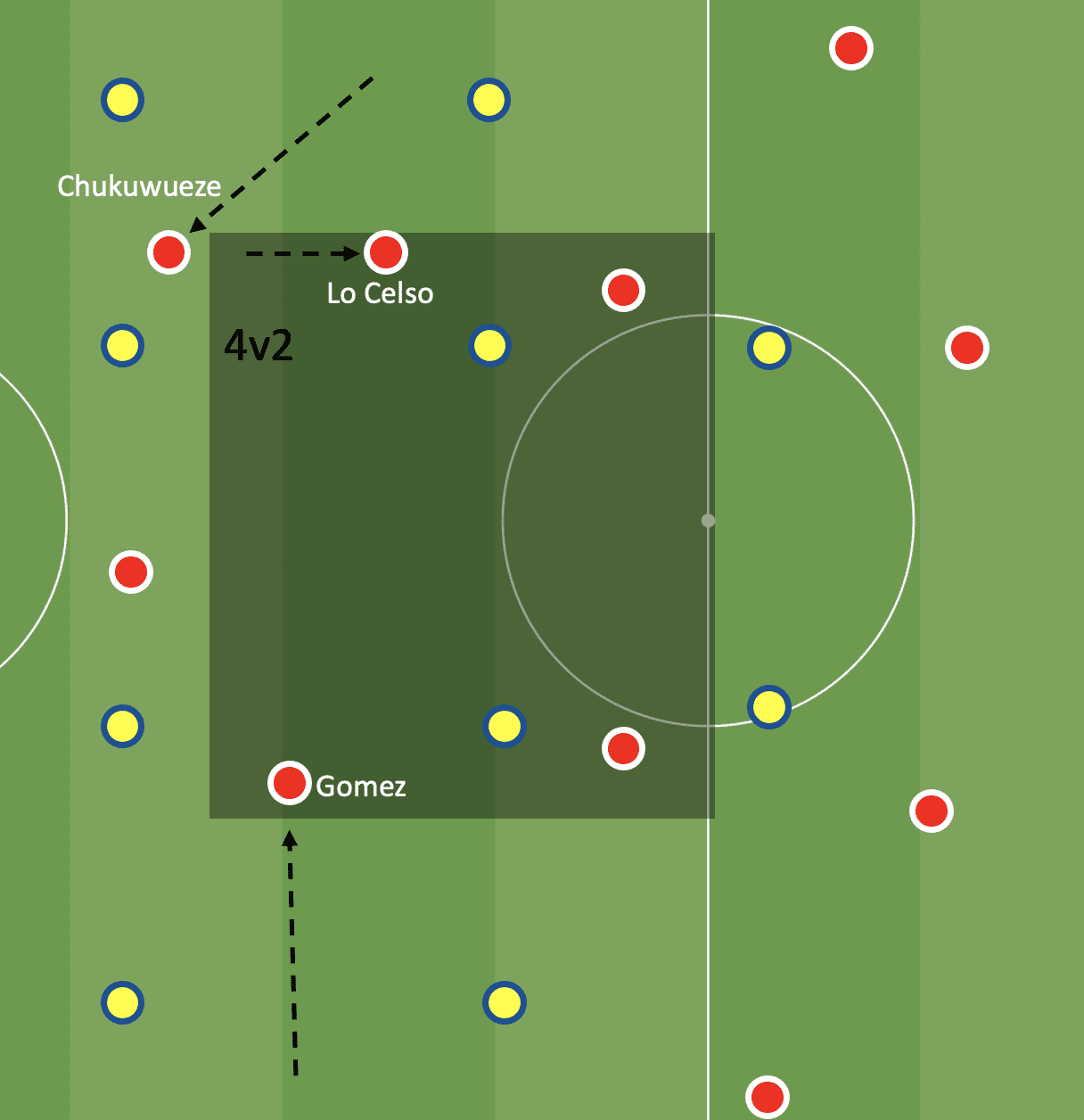
This created a 4-2-2-2 with a midfield box, this allowed Villarreal to create a midfield overload, with a 4v2 in Villarreal’s favour in this area. To combat this, Cadiz were forced to play much narrower in defence, using one of their wingers to tuck in to try and combat the midfield overload.
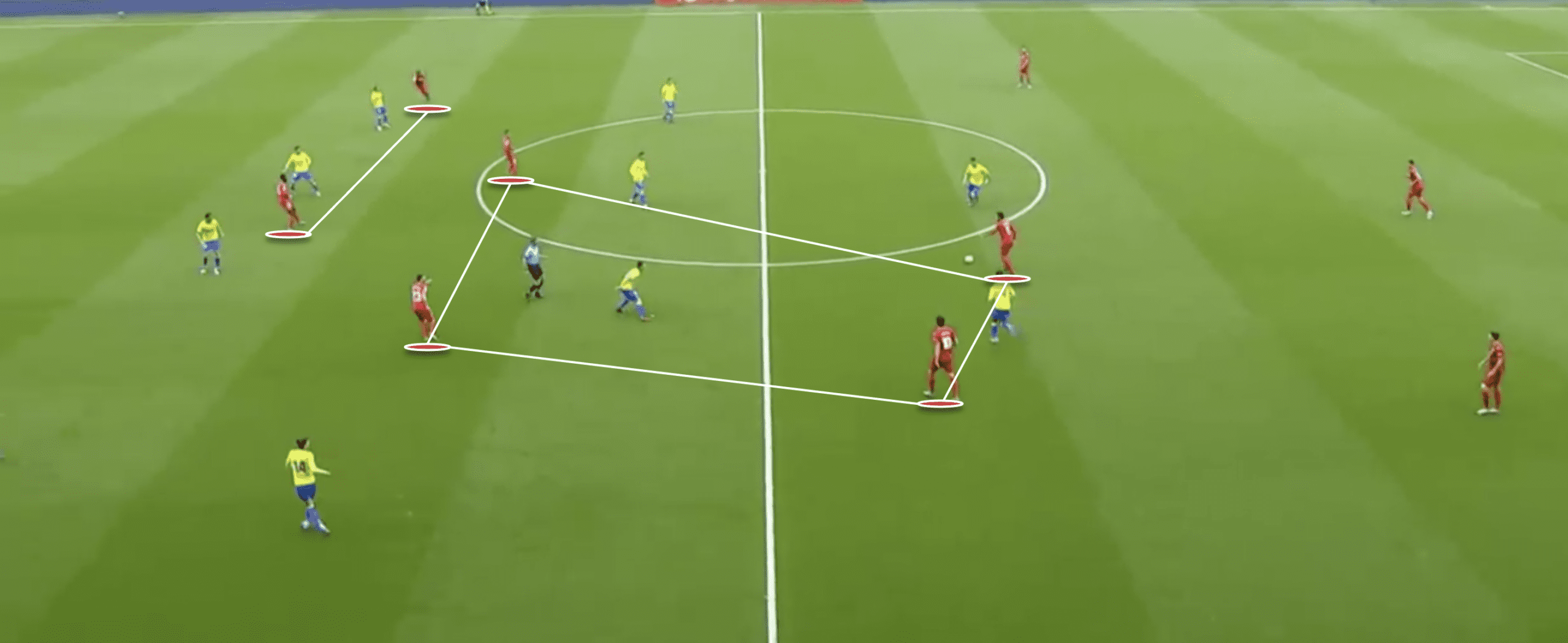
A game-winning performance: Luis Hernandez
While this match was fascinating from a tactical point of view, sometimes you need one of your experienced players to step up and perform, especially when in a relegation dogfight as Cadiz are. In this match, it was 32 year old Luis Hernandez.
Hernandez had a stellar performance in this match and would be my pick for the man of the match. He was vital to the invaluable clean sheet earned by his team. Hernandez expertly marshalled and led the defence, alongside 22-year-old Real Madrid loanee Chust. Hernandez’s opposite man, Dia – who has been one of the unsung heroes of this Villarreal side, with five goals and four assists in La Liga so far -was completely nullified by Hernandez in this match. The Senegalese international was limited to just two shots in this match, both of which were blocked by Hernandez. Dia had less than half the touches that Hernandez did in the match (20 to 50) and had little to no impact on the game. We can see Dia’s heat map (attacking from right to left) in the image below, which puts into perspective how ineffective he was.
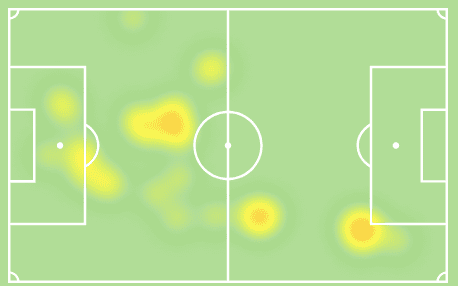
As we can see, most of Dia’s impact was made away from Hernandez, forced to drop much deeper to pick up the ball, or forced into the area where Lo Celso was operating. Dia was eventually taken off in the 62nd minute for Gerard Moreno.
Conclusion
The last-minute winner scored by Ruben Sobrino had drastic effects on the table. These vital three points lifted Cadiz out of the relegation zone, putting them one point above Mallorca in 18th. Villarreal however, will be bitterly disappointed. This result means that Emery’s men are now three points off of 6th place Real Sociedad, who occupy the final European place. Cadiz will be looking to use this positive result as a springboard into their next match after the international break, when they travel to 9th placed Valencia. Villarreal will be wanting to get back to winning ways as they play away against Levante, who currently sit rock bottom of the La Liga table by three points.






Comments